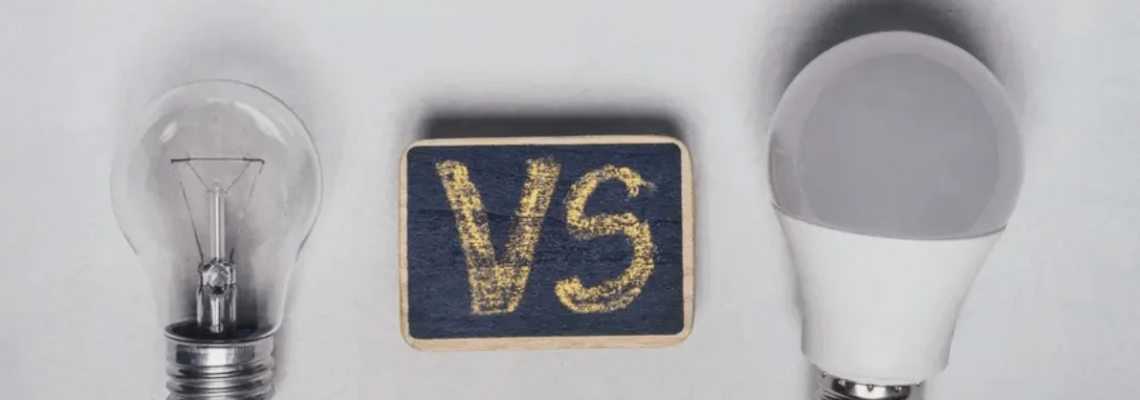
In today’s energy-conscious world, efficiency is more than just a buzzword; it’s a fundamental requirement. Lighting, whether in agriculture, commercial buildings, or residential homes, represents a significant portion of energy usage. With electricity costs steadily rising and sustainability becoming a global priority, many are beginning to question the continued use of outdated lighting technologies like incandescent, fluorescent, and high-pressure sodium (HPS) lamps.
The reality? Traditional lighting systems are no longer practical or efficient in a modern setting. They consume more electricity, generate excessive heat, and require frequent replacements, all of which add up in terms of both cost and environmental impact.
Enter LED lighting: a smarter, cleaner, and more cost-effective alternative. LEDs (Light Emitting Diodes) use a fraction of the energy traditional lamps require, offer longer lifespans, and produce less heat, making them ideal for virtually any application from indoor farming and industrial spaces to retail stores and homes.
In this blog, we’ll break down the numbers and benefits, showcasing how LEDs outperform traditional lighting on every front: energy consumption, cost efficiency, longevity, and sustainability. If you're still relying on old lighting tech, it may be time for an upgrade. The savings and the planet are worth it.
1. Understanding the Basics: LED vs. Traditional Lamps
Traditional lighting systems including incandescent, fluorescent, and High-Pressure Sodium (HPS) lamps have long been used in a variety of applications. These lamps rely on heating elements or gas discharges to emit light, which translates to significant energy loss in the form of heat.
In contrast, Light Emitting Diodes (LEDs) produce light through electroluminescence, a process that requires much less power and generates far less heat. This simple difference is the foundation of their superior efficiency.
2. Power Consumption: The Numbers Don’t Lie
One of the biggest advantages of LED lighting is its remarkably low power draw. Here’s how LEDs stack up against traditional lamps:
Incandescent Bulbs: Consume 60W to produce the same brightness as a 10W LED.
Compact Fluorescent Lamps (CFLs): Typically use 13-15W, still higher than most modern LEDs.
HPS Lamps: Widely used in agriculture, can consume 250W to 1000W, whereas a high-output LED grow light often uses just 300W to deliver similar or better PAR (Photosynthetically Active Radiation).
Switching to LEDs can lead to up to 80% energy savings, making them the clear choice for those looking to cut down on electricity bills.
3. Heat Output: A Hidden Cost
Traditional lighting systems generate excessive heat. This not only wastes energy but also necessitates additional cooling systems, especially in indoor agriculture settings or temperature-sensitive environments.
LEDs emit very little heat, reducing the need for air conditioning or fans, further slashing energy consumption and operational costs. In grow rooms, for example, this can result in significant savings over time.
4. Lifespan and Maintenance Costs
LEDs are not only more efficient but also incredibly durable.
LED Lifespan: 25,000 to 50,000 hours
Incandescent Bulb: Around 1,000 hours
CFL: 8,000 to 10,000 hours
HPS: 10,000 to 24,000 hours (with gradual light degradation)
Fewer replacements mean reduced maintenance labor and costs, especially in large-scale operations like commercial greenhouses, warehouses, or office buildings.
5. Smart Controls and Energy Management
Many modern LED systems come integrated with smart technologies, such as:
Motion sensors
Daylight harvesting
Programmable dimming schedules
IoT-based energy monitoring
These features allow for even more efficient energy use by ensuring lighting is used only when and where needed. Traditional lighting systems rarely offer this level of intelligent control.
6. Environmental Impact: A Greener Choice
Switching to LED lighting significantly reduces carbon footprints. Because they consume less electricity and last longer, they contribute to fewer greenhouse gas emissions and lower landfill waste.
Moreover, LEDs are mercury-free, unlike CFLs or HPS bulbs, which pose disposal hazards and environmental concerns.
7. Return on Investment (ROI)
While the initial cost of LED systems may be higher than traditional lighting, the ROI is quickly realized through:
Lower electricity bills
Fewer replacements
Reduced maintenance costs
Lower HVAC usage due to reduced heat
Most users see a return on investment within 1 to 2 years, with continued savings accruing for the remainder of the LED's lifespan.
Conclusion: Time to Make the Switch
The energy smackdown is over, and the results are clear: LEDs dominate traditional lighting systems in virtually every category. From energy savings and reduced heat to long lifespan and smart control capabilities, LED lighting is a future-proof investment.
Whether you’re outfitting a greenhouse, an office space, or a home, switching to LED technology means cutting costs, conserving energy, and contributing to a more sustainable planet. So yes, it’s time to ditch those old lamps your wallet and the environment will thank you.

Leave a Comment